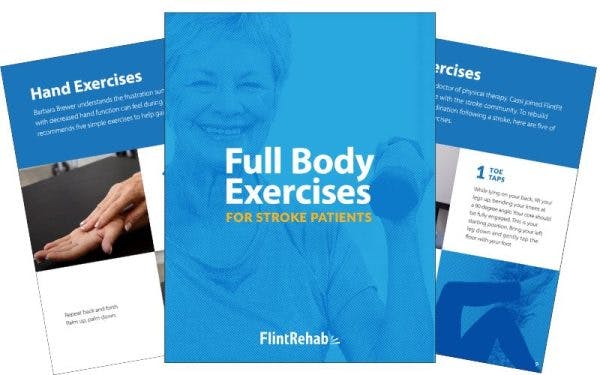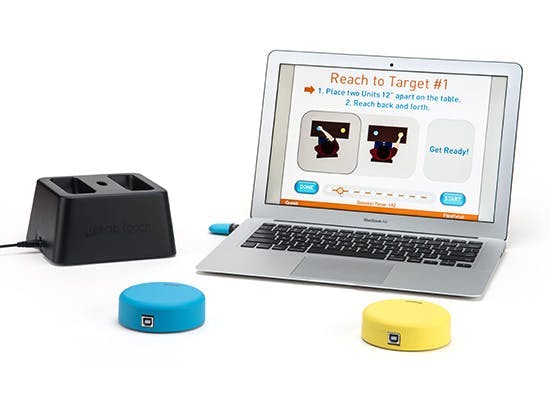Stroke recovery involves a lot of moving parts. For example, daily therapy, routines, appointments, and rebuilding strength just to name a few. But none of this happens without one crucial ingredient: energy.
Managing that limited energy can make the difference between a day that feels productive and one that feels overwhelming (or one that ends before it starts). In this guide, we will share 10 energy-saving strategies to help you move through each day with more balance, fewer crashes, and greater confidence in your recovery.
Let’s jump in!
1. Start With Your Priorities
Each day brings different tasks, but not all are equally important. Try beginning your morning by identifying one or two things that matter most. These might be therapy exercises, a medical appointment, or a meaningful routine like preparing your own meal.
Tackle these tasks when your energy is at its best which is usually earlier in the day for most people. This helps you feel productive without pushing past your limits.
2. Build In Rest Before You Need It
Waiting until you’re exhausted to take a break often leads to longer recovery times. Instead, try scheduling short rest periods throughout the day.
Even 10 to 15 minutes of quiet time can help reset your body and mind. The goal is to rest before you hit your limit instead of after. This approach can help you avoid the crash and recover cycle that often slows recovery down.
3. Mix Physical and Mental Activities
Both physical effort and mental concentration can use up energy. However, the amount of energy and exertion each uses heavily depends on the activity as well as the person.
Alternating between the two does a few things:
- It makes sure you keep variety which helps individuals stay engaged
- It makes sure you aren’t draining one system for hours at a time.
- It allows you to fit more in without burning out.
For example, follow a physical therapy session with something more restful, like reading or listening to music. Or after a long conversation, try stretching or walking if it feels easier than continuing to focus. Switching between activity types can help you stay balanced and make the most of your energy throughout the day.
4. Use Tools That Make Tasks Easier
Using a walker, cane, or grabber isn’t giving up. It’s being smart with your energy.
Assistive devices help reduce the effort required for daily tasks. This means you can get things done without feeling as drained. They also support safety and independence, especially when you’re working toward long-term goals.
If you’re unsure what might help, ask your therapist about tools designed to conserve energy while supporting recovery.
5. Eat Well and Stay Hydrated
Food and water directly affect your energy. Skipping meals or getting dehydrated can leave you feeling sluggish or dizzy, even if you haven’t done much physically.
Aim for meals with protein, fiber, and healthy fats. Include snacks if your energy dips between meals. Drink water regularly, and talk with your doctor if you’re not sure how much is right for you.
These small habits can help stabilize your energy throughout the day.
6. Break Big Tasks Into Smaller Steps
Large projects can be overwhelming and tiring. Breaking them into smaller pieces makes them easier to manage and less tiring overall.
For example, instead of cleaning the kitchen all at once, try:
- Wiping the counters
- Resting
- Washing a few dishes
- Taking another short break
Completing smaller steps adds up and helps you stay motivated without wearing yourself out.
7. Pay Attention to Your Mood
Emotional changes can be a signal that your energy is running low. Feeling suddenly irritable, frustrated, or sad during an activity may mean it’s time to pause.
Instead of pushing through, take a short break and check in with how you’re feeling. Emotional energy is just as important as physical stamina, and it deserves the same level of care. If you’re feeling emotionally drained, consider taking a few moments to practice deep breathing exercises and/or mindfulness techniques.
8. Track Your Energy Patterns
Every person’s energy levels are different. Some people feel better in the morning. Others find their rhythm later in the day.
Keeping a simple journal can help you notice patterns like when you’re most alert or when fatigue tends to hit. Write down what you did, how you felt afterward, and how long you needed to recover.
Over time, you’ll start to spot trends that make it easier to plan your day more effectively.
9. Create a Calmer Environment
Noise, clutter, and distractions can make it harder to focus and feel at ease. A calmer space uses less mental energy and helps your body relax.
Simple changes can include:
- Organizing frequently used items
- Turning off background noise
- Adding softer lighting in rest areas
- Keeping a tidy, low-stress space
These small shifts can improve your comfort and help your energy last longer.
10. Speak Up About Your Needs
Fatigue isn’t always visible. It can be hard for others to understand why you’re tired or why you need to cancel plans.
Being honest about your limits helps set clear expectations and reduces pressure to keep going when you need a break. Try saying things like:
- “I need to rest before we continue.”
- “Let’s plan for earlier in the day.”
- “I can join for a bit, but I may need to step away.”
Most people want to help and you just need to give them the opportunity.
Energy Management = Faster Recovery
Recovery takes effort, but it doesn’t require exhaustion. In fact, it requires the opposite which is smart energy management. With the right energy strategies in place, you can move through your day with more clarity, confidence, and control.
Start small, adjust as needed, and remember: doing less sometimes means you can do more tomorrow.









